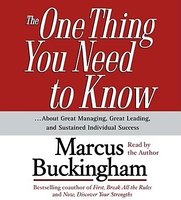Strategic Implementation Principle

Critical Strategic Implementation Principle
Corporate America has been desperately looking for the most important strategic leverage point to help them to be successful. In almost 25 years of leading turnarounds, managing companies, and consulting, it became clear that ultimate success of the organization was dependent on one simple common factor. It didn’t matter whether the organization was a Fortune 100 firm, federal agency, state agency, academic institution, church entity, or a small business. It didn’t matter what the IQ of the top executive was, how capable the workforce was, or even how desperately the organization needed change. (Strategic implementation principle)
What is that key success factor? Is it training, getting the right people on the bus, strategy, values, culture, or capital?
Weak Strategy and Poor Implementation
Two of our country’s top rated management experts, according to Business Week, offered surprisingly simple insights regarding the top problem today.
 David Ulrich, a professor of business administration at the University of Michigan states the biggest challenge is strategic implementation or the inability to establish and implement solid strategic plans.
David Ulrich, a professor of business administration at the University of Michigan states the biggest challenge is strategic implementation or the inability to establish and implement solid strategic plans.
Ram Charan, a coach to a handful of America’s most successful CEOs, likewise says the big issue today is bad strategic implementation. Ram stresses “it is as simple as that: not getting things done, being indecisive, not delivering on commitments.”
In a survey of management consultants, it was reported that fewer than 10 percent of effectively formulated strategies were successfully implemented. Many executives enjoy the intellectual game of strategizing, but struggle with the boredom, difficulty and simple principles focused on getting the work accomplished – which turns out to be the greater challenge. (Strategic implementation principle)
Leadership, Focus and Discipline
Leadership, focus, strategic plans, and discipline are all key ingredients in organizations that have environments of positive accountability, that execute well, and that deliver results.
Warren Bennis, a leadership expert, says that “Leadership accounts for, at the very least, 15 percent of the success of any organization.”
 Marcus Buckingham, in his book The One Thing You Need to Know states that “great leaders rally people to a better future.” Marcus shares that what defines a leader is his preoccupation with the future. A leader carries a vivid image of what the future could be, and this image drives him on. An individual is a leader if, and only if, he is restless for change, optimistic about the future, determined, impatient for progress, deeply dissatisfied with the status quo, and able to rally others to a better future he sees.
Marcus Buckingham, in his book The One Thing You Need to Know states that “great leaders rally people to a better future.” Marcus shares that what defines a leader is his preoccupation with the future. A leader carries a vivid image of what the future could be, and this image drives him on. An individual is a leader if, and only if, he is restless for change, optimistic about the future, determined, impatient for progress, deeply dissatisfied with the status quo, and able to rally others to a better future he sees.
Having a vision is one thing, but getting there is another.
Prominent leadership guru Jim Collins summarizes in the article “Good to Great” the results of a five-year study. He and his team scoured a list of 1,435 established companies to find every extraordinary case that made a leap from average results to great results. The results of this study amazingly point to the need for simple, sustained, broad-based focus and execution. Two highlights of findings include:
- There was no miracle moment. Instead, a down-to-earth, pragmatic, committed-to-excellence process — a framework — kept each company, its leaders, and its people on track for the long haul. In each case, it was victory of steadfast discipline over the quick fix.”
- “When people begin to feel the magic of momentum — when they begin to see tangible results and can feel the flywheel start to build speed — that’s when they line up, throw their shoulders to the wheel, and push. And that’s how change really happens.
Ram Charan stresses that in addition to leadership and discipline, great CEOs hold people accountable. Accountability is always the key to getting anything accomplished, or strategic implementation, – in either corrupt or noble organizations. (Strategic implementation principle)
Extreme Approaches
 There are two extremes when it comes to creating models of organizational accountability. Both models are destructive in the long-term.
There are two extremes when it comes to creating models of organizational accountability. Both models are destructive in the long-term.
Some organizations thrive on negative accountability or fear. In these organizations, the threat of losing a job is the universal motivation. Employees are often dumped upon or used and accountability becomes a disguise for a culture of blame. Employees become disgruntled in a fear-based organization when they feel constantly compelled or threatened.
On the other hand, some organizations advocate a permissive environment with limited accountability. Productive employees lose motivation when they learn that their contributions aren’t utilized and aligned. Less productive employees start to develop entitlement mentalities. Promotions begin to be awarded to those who speak well, have presence and charisma and who don’t stir the pot. Such organizations can dampen industry, tear down character, and demoralize people.
The most important questions an organization can ask itself are, “what type of accountability is most appropriate? What approach will create positive results for both the organization and its employees?”
Focus First
 Highly effective CEOs start by focusing on a few initiatives that are clear and specific. They don’t launch a new initiative until those in progress are embedded in the company’s DNA. For instance, Jack Welch introduced just five major initiatives in eighteen years as CEO at G.E.
Highly effective CEOs start by focusing on a few initiatives that are clear and specific. They don’t launch a new initiative until those in progress are embedded in the company’s DNA. For instance, Jack Welch introduced just five major initiatives in eighteen years as CEO at G.E.
To establish positive accountability there are basic underlying requirements. An organization must first define, stay committed to, and be clear about its expectations. Expectations are often conveyed in the form of measurable goals, operations, and values.
Clear and sustained focus is needed at all levels of the organization. This is most important job of a leader. There are basic questions that all leaders within an organization should focus on to determine if expectations are clear enough. If the answer to any is of the questions below is “no,” then work is needed.
Managers often doubt the importance of focus on goals, operations, and values. “Let’s focus on the practical work of getting things done,” is often what is heard when managers are first brought together to plan. “Never mind strategic planning.”
In a seminal article called “Beware the Busy Manager,” Heike Bruch and Sumantra Ghoshal report on a ten year study they conducted of the behavior of busy managers. They found that, fully 90 percent of managers squander their time in all sorts of ineffective activities. A mere 10 percent of managers spend their time in a committed, purposeful, and reflective manner. Both focus and energy are critical traits. Together, they produce the kind of purposeful action organizations need most.
Managers are not well focused, and unfortunately employees are not either.
FranklinCovey conducted a study of 850 workers from many different companies and found that these (knowledge) workers typically spend only 40% of their time on tasks related to the organization’s mission-critical objectives.
The true bottom line is clear focus and execution are the most important jobs of leaders. (Strategic implementation principle)
Create a System of Positive Accountability
 A system of accountability ensures that there are mutually understood expectations, progress is being made at an agreeable pace, and, quality levels are being met. A system of positive accountability considers both the needs of the organization and of its employees. It ensures that win/win is a reality and not just a concept.
A system of accountability ensures that there are mutually understood expectations, progress is being made at an agreeable pace, and, quality levels are being met. A system of positive accountability considers both the needs of the organization and of its employees. It ensures that win/win is a reality and not just a concept.
Truly effective leaders understand their people. They understand the talents and passion of their employees. Most importantly, they align talents and passions with the required work to create success.
Understanding what is important to employees is essential. Interestingly, according to a Gallup research project that expanded over 25 years, the most significant factor in attracting, focusing, and keeping employees is a clear understanding of expectations. This simple finding dovetails with the Abraham Maslow’s hierarchy of needs model that specifies that physiological and safety needs are basic requirements for all. Knowing what is expected is vital for employees – so they can know that their basic needs can be addressed.
Employees also need to belong, to be accepted, and to have self-esteem in their skills. These insights tie into the Gallup research as well. According to the research, employees need:
- Materials and equipment to do their job
- The opportunity to do what they do best every day
- To receive frequent (at least weekly) recognition or praise for doing good work
- To know that their supervisor cares about them as a person. Someone to encourage their development
- To know that their opinions count
- To feel that the mission of the company is noble
- The opportunity to discuss the progress of their work
- The opportunity to learn and grow
The Power of Reviews
Stephen Cooper is considered one of the top turn-around CEOs in the world. Cooper’s approach is basic. He starts his turnaround initiatives by setting audacious goals, establishing performance plans, and conducting weekly reviews.
Under Cooper, everyone has a one-page performance plan. Each person has just a few goals and metrics to track progress. Each goal is ranked relative to each other.
The weekly reviews at all levels of the organization are critical. Plans don’t count for much unless progress is tracked, and even the best plans need to be modified. The reviews focus on: objectives, status, issues, and recommendations. The reviews are also critical in setting priorities and encouraging joint problem-solving.
In Cooper’s organization, every person, every week, knows what they should be doing, and how their goals relate to the goals of the people around them.
The reviews should also be an opportunity to discuss what should not be done. Jim Collins emphasizes that one of the common traits of organizations who were able to become great is they all looked at what they were currently doing that they needed to Stop Doing. A practice of turnaround CEOs is to review all of the projects/initiatives, stop many, and drill in on a few. (Strategic implementation principle)
Purpose of Progress Reviews
The purpose of the process reviews is to ensure alignment, progress, and individual growth. The reviews should be constructive, open, and productive. Industrious employees enjoy sharing results, and review sessions provide them that opportunity.
Regular reviews could focus on the following:
- Review progress on plans
- Highlight and celebrate successes
- Discuss risks or issues
- Provide detailed feedback
- Individual Coaching
- Listen and understand goals and passions of employee
- Coach the employee to reach their potential
Work Review
Leaders should ensure that each employee has a plan and measurements. The plans should regularly reviewed, adjusted as required, and be taken seriously. Leaders that do not perform this role do a deep disservice to the organization and its employees.
Individual Coaching
The reviews can also become outstanding coaching opportunities. A good leader understands and cares about he/her people, holds them accountable, and works to put them in roles aligned with their talents and passions.
A good leader serves as a coach. They help each employee to recognize and capitalize on their talents and passions. They paint an image of excellence, and help the employee to embody this picture. They have confidence in their employee. They show the employee how to reach the standards.
Frequency and Duration
Most organizations drastically underestimate the need for progress reviews. Stephen Cooper is successful in turning companies around because he is focused, intense, and ensures that his resources are aligned through weekly top-down reviews at all levels. The sessions are crisp and short and highly effective.
Change is Difficult
Moving to a system of positive accountability will prove to be critical to success. Change is difficult. The model below depicts the typical change process.
Change Process
At the base of the model is the word “Denial.” Most managers are convinced that “we don’t have a problem” and “my organization is run as well as could be expected.” Helping a client to admit that improvement is possible can be thorny for a consultant.
Once a problem is understood and accepted, the natural temptation is to offer excuses or blame others for the problem. Often the excuses and blame are legitimate. However, what matters is doing all that can be done to make things better.
The challenge is to have enough resolve to improve the situation. Resolving to changes implies that one is will to make a plan and take action. James O. Prochaska, Professor of Psychology at the University of Rhode Island, outlines a different change model. He states there are five major stages change as outlined below:
- Stage 1 – Not interested in change
- Stage 2 – Considering change
- Stage 3 – Ready to make plans
- Stage 4 – Ready to take action
- Stage 5 – Maintaining the change
There are often ups and downs in an effort to change. Process is made with one can honestly say to themselves “I am really working on this.” At some point with enough determination and patience, a new habit is formed, and success becomes a pleasant reality. (Strategic implementation principle)
Summary
Corporate America has also searched for the right top leader that can strategize, execute, deliver results and save the company. Finding the right top executive has been a challenge. The revolving door for CEOs continues to spins faster and faster. In the year 2000 alone, forty CEOs of the top 200 hundred companies in America were removed. Twenty percent of the most powerful business leaders lost their jobs.
The top challenge in Corporate America is in the successful execution of strategies and plans. Executives enjoy strategizing but often struggle with implementation. Success only comes once plans have been effectively deployed.
Leadership, focus, and accountability are critical factors to organizational results.
The article addresses the need for focus and most importantly positive accountability.
Frequent reviews at every level of the organization are the key to successful deployment of plans, organizational results, and the growth of employees.
